The Undeniable Truth About Achievement
“If you’re not making the progress you’d like to make, and are capable of making, it is simply because your goals are not clearly defined.”
These words from Paul J. Meyer—founder of Leadership Management International and pioneer in the personal development industry—encapsulate a profound truth that many of us overlook in our quest for success. In today’s fast-paced world where complexity seems unavoidable, Meyer’s insight cuts through the noise with striking simplicity.
But what exactly makes clarity such a powerful force in goal achievement? And why do so many of us struggle with it?
The Fog of Ambition
We’ve all been there. You have a general sense of what you want to accomplish—perhaps it’s “growing your business,” “becoming a better leader,” or “improving team performance.” These aspirations feel meaningful, yet somehow months pass with little tangible progress.
The challenge isn’t usually lack of desire or even lack of effort. Rather, it’s that these goals exist in a fog of ambiguity. Without specificity, our minds and actions wander, unable to lock onto a clear target.

Research consistently shows that vague intentions rarely translate into meaningful outcomes. In one study at the University of California, researchers found that teams with clearly defined goals outperformed equally talented groups with ambiguous objectives by an average of 30%. Clarity doesn’t just help—it transforms performance.
The Meyer Method: Clarity as the Foundation
Paul J. Meyer wasn’t just a motivational theorist; he built a business empire worth over £3 billion by applying his principles in real-world settings. His approach to goal setting wasn’t merely about positive thinking—it was about precise thinking.
“Whatever you vividly imagine, ardently desire, sincerely believe, and enthusiastically act upon must inevitably come to pass,” Meyer famously stated. Note how his formula begins with vivid imagination—a clear, detailed vision of what you want to achieve.
For Meyer, clarity wasn’t just helpful; it was the fundamental prerequisite for success. Without it, desire, belief, and action lack direction and power.
What “Clearly Defined” Actually Means
When Meyer speaks of clearly defined goals, he’s referring to something far more specific than many of us realise. A clear goal contains several critical elements:
- Specificity: Exactly what will be accomplished, with no room for interpretation
- Measurability: Concrete criteria for determining progress and completion
- Context: Understanding why the goal matters and how it connects to broader objectives
- Timeline: Precise deadlines and milestones
- Ownership: Clear responsibility and accountability
Consider the difference between “I want to improve my leadership skills” and “I will complete LMI-UK’s Foundations of Success programme by November, implementing at least three new leadership practices that increase my team’s productivity by 15% as measured in our quarterly review.”
The second version eliminates ambiguity, creating both a clear path and a definitive way to measure success.
The SMART Framework: Meyer’s Lasting Legacy
While many attribute the SMART goal framework to different sources, Paul J. Meyer was among its earliest and most influential proponents, incorporating these principles into his training programmes as early as the 1960s.
The SMART criteria—Specific, Measurable, Achievable (or Aligned), Relevant, and Time-bound—provide a practical template for injecting clarity into any objective:
- Specific: What exactly will you accomplish? Who is involved? Where will it happen?
- Measurable: How will you know when you’ve succeeded? What metrics matter?
- Achievable: Is this realistic given your resources and constraints?
- (or Aligned: does the goal correlate with the bigger picture vision/purpose?)
- Relevant: Does this align with your broader objectives and values?
- Time-bound: When exactly will this be completed?
- (or Tangible: can I clearly sense what accomplishment will look and feel like?)

At LMI-UK, we’ve seen countless professionals transform their effectiveness simply by running their goals through this clarity filter. One healthcare leader who participated in our programme increased her team’s efficiency by 27% after reframing vague departmental objectives into crystal-clear SMART goals—a transformation you can read about in our case study.
The Ripple Effect of Clarity
The power of clearly defined goals extends far beyond individual achievement. When leaders embrace clarity, it creates a ripple effect throughout their organisations:
Enhanced Focus and Decision-Making
When goals are crystal clear, decision-making becomes simplified. Every opportunity, initiative, or investment can be evaluated against a precise standard: “Does this move us closer to our clearly defined goal?”
This clarity eliminates the paralysis that comes from weighing endless options without a definitive standard for judgment.
Improved Team Alignment
Vague directives create confusion and conflicting interpretations. Clear goals, however, align teams around shared understanding. When everyone sees the same target, collaboration replaces conflict, and complementary efforts replace contradictory ones.
Increased Motivation and Persistence
Humans are motivated by progress, but we can only recognise progress when we have clear benchmarks. Precisely defined goals allow us to see our advancement, creating the positive feedback loop that fuels persistence.
As Meyer noted: “Productivity is never an accident. It is always the result of a commitment to excellence, intelligent planning, and focused effort.”
From Foggy to Focused: Practical Steps
Transforming vague aspirations into clear, powerful goals requires deliberate practice. Here’s how to apply Meyer’s insights in your own leadership journey:
1. Conduct a Clarity Audit
Review your current goals—both personal and organisational. For each one, ask: Could a stranger understand exactly what success looks like? If not, it lacks clarity.
2. Apply the Specificity Test
For each goal, answer the fundamental questions: What exactly will be accomplished? By whom? By when? How will it be measured? Why does it matter?
3. Create Clarity Checkpoints
Schedule regular reviews specifically focused on goal clarity. As projects evolve, ambiguity often creeps back in. These checkpoints prevent drift and maintain precision.
4. Visualise the End Result
Meyer emphasised vivid imagination. Take time to mentally picture what success looks like in concrete detail—the specific outcomes, numbers, and impacts that represent achievement.

5. Communicate with Precision
Leaders must model clarity. Review your communications—are you passing along vague directives or crystal-clear objectives? The language you use shapes how others think and act.
Common Pitfalls on the Path to Clarity
Even with the best intentions, several common obstacles can derail our pursuit of clear goals:
The Complexity Trap
Some leaders mistake complexity for sophistication. They create elaborate goal structures with numerous metrics, dependencies, and qualifications. Remember Meyer’s approach: profound simplicity is more powerful than complex ambiguity.
The Flexibility Excuse
“We need to stay flexible” often becomes justification for avoiding clarity. True adaptability comes not from vague goals but from clear objectives paired with adjustable strategies.
The Perfection Delay
Waiting until you have perfect information before clarifying goals ensures you’ll never begin. Start with the clarity you have, then refine as you progress.
Bringing Meyer’s Wisdom into Today’s World
The business landscape has changed dramatically since Meyer first shared his insights, but the fundamental truth remains: clarity precedes achievement.
In today’s data-rich environment, we have more metrics and analytics than ever before. This makes clarity both more challenging (due to information overload) and more essential (to cut through the noise).
Modern leaders must become clarity creators—individuals who can distill complex situations into precisely defined goals that inspire focused action.
The Lasting Legacy of Paul J. Meyer
Paul J. Meyer built his success philosophy on the foundation of clearly defined goals, and decades later, his insight remains as powerful as ever. His approach wasn’t about simplistic positive thinking but about the disciplined practice of clarity.
As he succinctly put it: “Enter every activity without giving mental recognition to the possibility of defeat.”
This mindset becomes possible only when you’ve defined success with such clarity that your mind and actions align perfectly toward its achievement.
Your Next Step Toward Clarity
At LMI-UK, we’ve built our Foundations of Success workshop (contact us if for a code to book a complimentary place) around these timeless principles. We’ve seen how professionals across industries transform their effectiveness when they master the art of goal clarity.
The question isn’t whether Meyer’s insight is true—decades of success stories prove it is. The real question is: Will you apply this simple truth to your own leadership journey?
If you’re not making the progress you know you’re capable of, perhaps it’s time to bring Meyer’s clarity principle into your goal-setting process. The results might surprise you.
After all, in the words of Paul J. Meyer himself: “Crystallize your goals. Make a plan for achieving them and set yourself a deadline. Then, with supreme confidence, determination and disregard for obstacles and other people’s criticisms, carry out your plan.”
